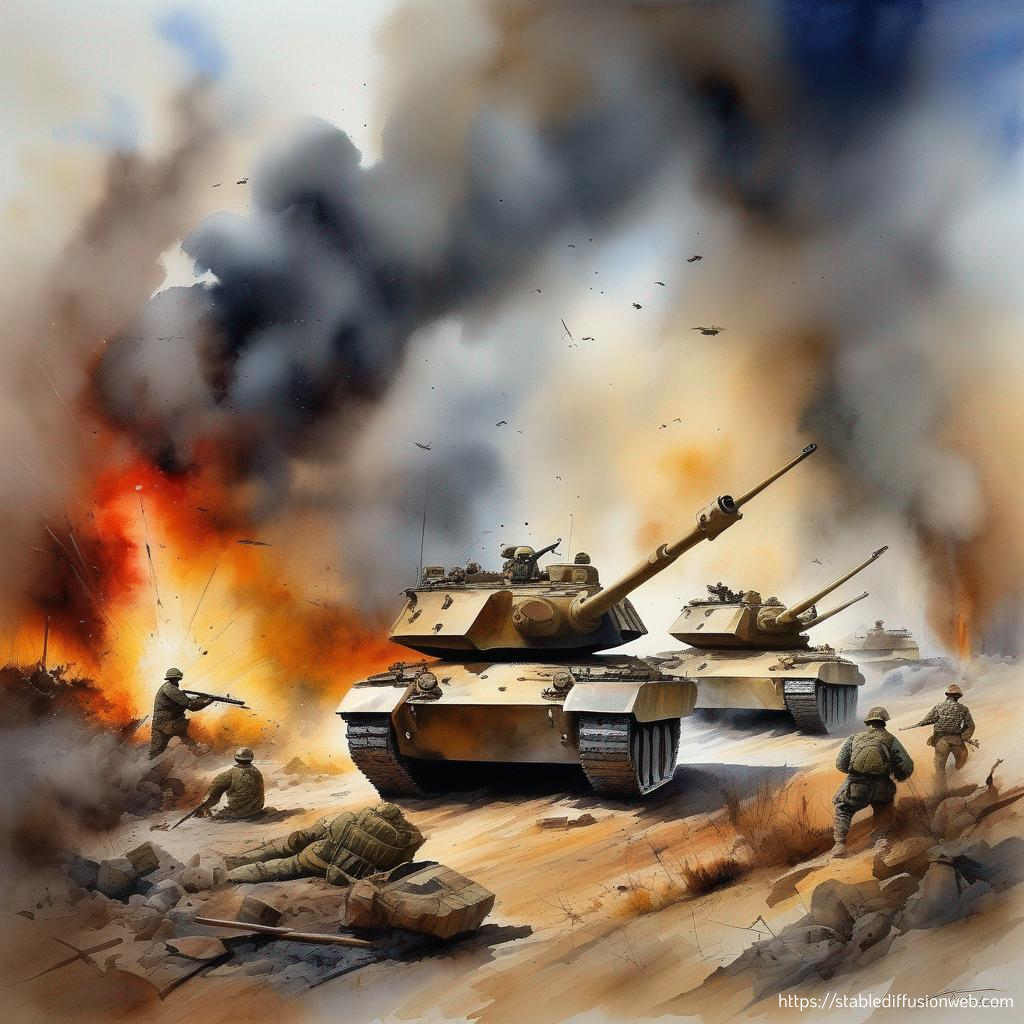The Utility of Force: The Art Of War In The Modern World (Rupert Smith)
Notes from relevant books on Foreign Policy, Diplomacy, Defence, Development and Humanitarian Action.
Smith, Rupert. The Utility of Force: The Art of War in the Modern World. (Penguin, 2006)
This note has been drafted using ChatGPT. My role is limited to selecting the book, designing the prompts, and editing the text. The images have also been designed using AI, specifically Stable Diffusion Image Generator.
This Note tries to give a general idea of the content of the book, but does not in any case replace actually reading it. Think of it as teaser to encourage you to read further!
This is a classical book (published in 2005) on how to use military force in a context where “wars amongst the people” are the prevailing model of conflict. The protection of Civilians, and the consistency between military actions and political objectives remain particularly relevant today.
"The Utility of Force" by Rupert Smith is a seminal work that delves into the evolving nature of warfare in the contemporary world. Smith challenges traditional views of warfare that are rooted in state-centric models, advocating for a more nuanced understanding of conflicts that often involve non-state actors, irregular forces, and unconventional methods. The book presents a comprehensive analysis of the strategic landscape, emphasizing the need for military institutions to adapt to the complexities of modern conflict.
One of the central themes is the idea of strategic adaptation. Smith argues that military organizations must be agile and flexible in their approaches, recognizing that conflicts may not conform to traditional paradigms. He explores the concept of network-centric warfare, highlighting the interconnected nature of modern conflicts. This perspective acknowledges that military operations are just one aspect of a broader network that includes political, economic, and social dimensions.
A key emphasis is placed on the political context of warfare. According to Smith, the use of force should always align with political objectives, and military actions must be carried out with a deep understanding of the broader political environment. The book contends that successful military strategies must be grounded in a thorough comprehension of the political dynamics at play.
Globalization emerges as a crucial factor influencing contemporary conflicts. Smith explores how the interconnectedness of the world has transformed the nature of warfare, making it more transnational and complex. The book argues for a holistic approach that considers the global dynamics shaping conflicts, moving beyond traditional geopolitical boundaries.
Some key ideas include:
1. Changing Nature of Conflict: Smith argues that traditional concepts of warfare, defined by state vs. state conflicts, are becoming outdated. He emphasizes the importance of understanding and adapting to the changing nature of conflict, which often involves non-state actors and unconventional methods.
2. Strategic Adaptation: The book stresses the need for military organizations to adapt strategically to the complexities of contemporary conflicts. This involves recognizing that conflicts may not fit traditional models and require flexible, innovative approaches.
3. Networked Warfare: Smith discusses the idea of network-centric warfare, highlighting the interconnected nature of modern conflicts. This involves not only military forces but also other actors such as political, economic, and social entities.
4. Political Context: The utility of force is viewed through a political lens. Smith argues that military actions should always be aligned with political objectives and that understanding the political context is crucial for successful military strategies.
5. Globalization's Impact: The book explores how globalization has influenced conflicts, making them more interconnected and transnational. It emphasizes the importance of considering global dynamics in military planning.
Real-world examples.
1. The Gulf War (1990-1991): Smith reflects on his experiences as a British Army officer during the Gulf War, particularly the coalition forces' rapid conventional military victory against Iraq. He uses this example to highlight the limitations of viewing conflicts solely through a traditional state-centric lens and the importance of understanding the broader political context.
2. Bosnia (1992-1995): Smith examines the challenges faced by UN and NATO forces in dealing with a complex conflict involving multiple ethnic groups and the difficulties in achieving political objectives amid a fragmented and dynamic environment.
3. Kosovo (1999): Operation Allied Force, the NATO intervention in Kosovo, is analyzed by Smith to illustrate the shift towards network-centric warfare. He discusses the use of airpower and the interconnected nature of military, political, and informational elements in this campaign.
4. Iraq (2003): The invasion of Iraq in 2003 is discussed as a case where political objectives were not fully aligned with military actions. Smith analyzes the consequences of insufficient understanding of the political dynamics in post-invasion Iraq, emphasizing the importance of considering the long-term consequences of military interventions.
5. Afghanistan : The protracted conflict in Afghanistan is explored to illustrate the challenges of dealing with insurgencies and non-state actors. Smith discusses the limitations of traditional military strategies in counterinsurgency operations and the need for a more holistic, adaptable approach.
In summary, "The Utility of Force" provides a comprehensive and thought-provoking exploration of the changing nature of warfare. It challenges conventional wisdom, advocating for strategic flexibility, a deep understanding of political contexts, and recognition of the globalized nature of modern conflicts. Smith's insights have implications not only for military professionals but also for policymakers, scholars, and anyone seeking a deeper understanding of the dynamics shaping the use of force in the contemporary era.



